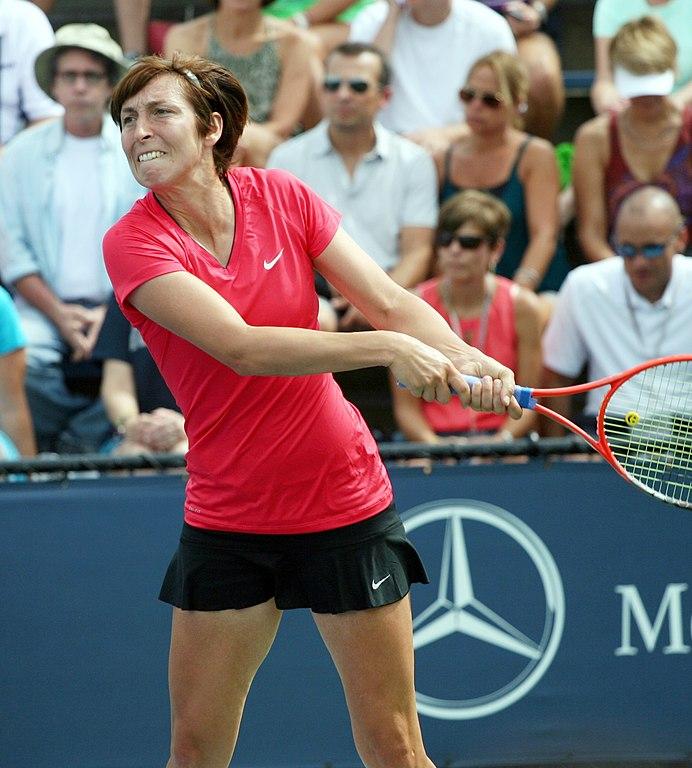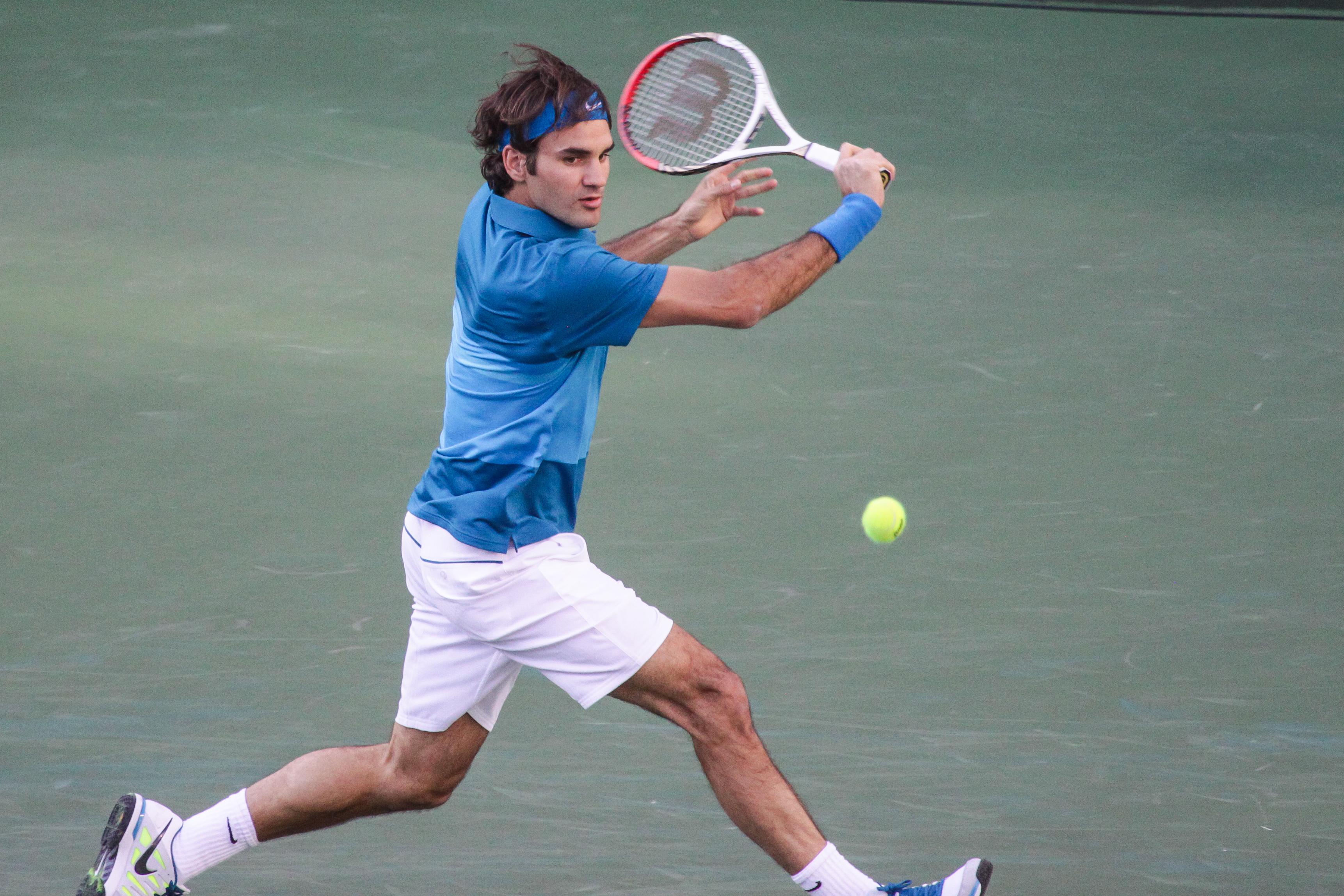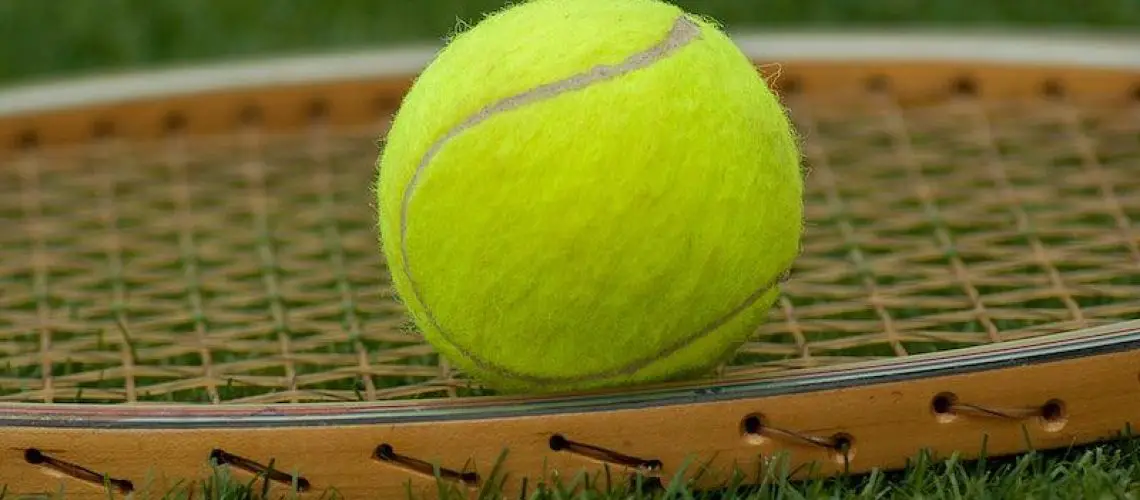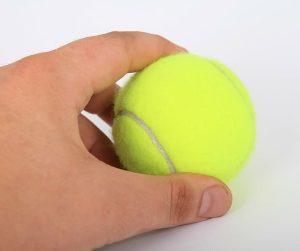We may earn money or products from the companies mentioned in this post.
Introduction

Tennis, a sport that requires agility, skill, and precision, has seen a fascinating evolution in the physical attributes of its players over the years From the days of small-statured champions like Rod Laver and Bjorn Borg to the modern era dominated by towering figures like Roger Federer and Serena Williams, the height of tennis players has undergone a remarkable transformation In this article, we will delve into the reasons behind this shift in player height and explore its implications for the game
A Brief History of Tennis Players’ Height Evolution
In the early days of professional tennis, players were generally shorter compared to their counterparts today This can be attributed to several factors such as playing styles, equipment limitations, and societal norms Classic tennis legends like Rod Laver and Bjorn Borg stood at around 5 feet 8 inches tall, which was considered average height for male athletes during that time
However, as tennis progressed into the late 20th century, taller players began to emerge on the scene The likes of Pete Sampras and Boris Becker broke through with their powerful serves and sheer athleticism These players stood at around 6 feet tall or slightly more, providing an advantage with their increased reach on court
The trend towards taller players continued into the new millennium with iconic figures like Roger Federer and Rafael Nadal dominating men’s tennis Standing at approximately 6 feet 1 inch and 6 feet respectively, these athletes showcased a blend of power, speed, and finesse that revolutionized the game
The Importance of Height in Modern Tennis
In modern tennis, height plays a crucial role in determining a player’s style of play and overall success on the court One key advantage that taller players possess is their ability to generate greater racket head speed due to longer levers This translates into more power behind their shots, particularly on serves and groundstrokes
Additionally, taller players often have a larger wingspan, enabling them to cover the court more efficiently and reach balls that would be out of reach for shorter opponents This extended reach allows for greater shot selection and defensive capabilities, making it harder for opponents to hit winners against them
Moreover, height can provide an advantage in terms of serve effectiveness A taller player can generate more downward trajectory on their serves, resulting in increased accuracy and spin This can make it challenging for opponents to return with precision and puts pressure on their service games
Objective of the Article: Exploring the Reasons Behind Tall Tennis Players
In this article, our goal is to dive deeper into the factors that contribute to the prevalence of tall tennis players in today’s game We will explore various aspects such as genetic predisposition, training methods, advancements in sports science, and changes in playing surfaces that may have influenced this shift towards height dominance
By understanding these reasons behind tall tennis players’ emergence, we can gain insights into how the sport has evolved over time and appreciate the unique blend of physical attributes needed to excel at the highest level of competition
The Role of Physical Attributes in Tennis Success

Tennis is a sport that requires a combination of skill, strategy, and physical prowess While technique and mental fortitude play crucial roles in achieving success on the court, physical attributes also contribute significantly to a player’s performance In this article, we will explore the impact of height and wingspan on a tennis player’s ability to serve effectively and excel in gameplay
Height and its Impact on Serving
When it comes to serving in tennis, height can be a game-changer Taller players have the advantage of generating more power and angle with their serves The extra height allows them to generate greater racket-head speed, resulting in faster serves that are harder for opponents to return
In addition to power, the enhanced reach provided by height gives taller athletes an edge during service With longer arms, they can stretch further towards the net when executing their serves This increased reach allows for better placement of the ball, making it more challenging for opponents to anticipate and return with precision
Advantages of Increased Wingspan and Reach During Gameplay
Height isn’t the only physical attribute that impacts a tennis player’s performance An increased wingspan and reach also play a crucial role in gameplay success Having a longer wingspan provides players with added leverage during groundstrokes
This extra length allows for more effective shots with greater spin control and depth It enables players to generate more power from their strokes while maintaining accuracy and consistency With improved leverage, players can hit winners or force errors from opponents more easily
Furthermore, an extended reach enhances a player’s ability to cover the court effectively With longer arms, players can stretch farther while reaching for shots that would otherwise seem out of reach This heightened ability to retrieve shots and cover more ground on the court gives players a defensive advantage, allowing them to return difficult shots and stay in rallies longer
In conclusion, physical attributes such as height, wingspan, and reach play a significant role in a tennis player’s success Taller players benefit from increased power and angle during serves, while an extended wingspan provides added leverage for effective groundstrokes Moreover, a longer reach enhances a player’s ability to cover the court and retrieve shots By understanding the impact of these physical attributes, players can maximize their strengths and develop strategies that capitalize on their unique abilities
The Influence of Athletic Development and Training on Height in Tennis Players

Genetics, Growth Spurt, and Height Potential in Athletes
When it comes to height in tennis players, genetics plays a significant role in determining an individual’s natural height range Just like any other sport, tennis players inherit their height potential from their parents While some may have genetic advantages that predispose them to be taller, others may have a more limited growth potential
Growth spurts can also have a profound impact on a player’s final adult height These sudden bursts of growth are common during adolescence when the body experiences rapid changes It is during this period that tennis players can witness significant increases in their height, allowing them to reach their maximum potential
Training Methods Geared Towards Maximizing Physical Advantages
To maximize their physical advantages, tennis players engage in various training methods that promote growth and development Strength training is one such approach that helps enhance bone density and muscular strength, which can indirectly support overall growth
In addition to strength training, diet also plays a crucial role in supporting growth A well-balanced diet rich in essential nutrients like protein, calcium, vitamin D, and zinc can provide the necessary building blocks for optimal growth and development
Furthermore, some athletes may opt for supplements designed to support growth These supplements often contain ingredients that aid bone health and promote hormonal balance to optimize height potential
Development Programs Focused on Nurturing Young Talents
Tennis academies and development programs are specifically designed to nurture young talents by providing them with comprehensive training regimes tailored towards maximizing their physical advantages
These programs incorporate various elements such as technical skill development, physical conditioning exercises specific to tennis movements, mental resilience training, and injury prevention strategies By focusing on these aspects, young tennis players can develop their overall athleticism and potentially enhance their height potential
Overall, while genetics and growth spurts play a significant role in determining height potential in tennis players, the right training methods and development programs can also contribute to maximizing physical advantages By combining proper strength training, nutrition, and targeted development programs, athletes have the opportunity to optimize their growth potential and reach their maximum height
Conclusion

Being a tall tennis player comes with its fair share of benefits and drawbacks On the positive side, tall athletes have a distinct advantage when it comes to serving power and improved reach Their height allows them to generate more force behind their shots, making it harder for opponents to return the ball Additionally, their longer limbs give them an extended reach, enabling them to cover more ground on the court
However, there are also some drawbacks to being a tall tennis player One major concern is the increased risk of injury Tall players often put more strain on their joints and muscles due to their size and the extra force they generate in their movements Moreover, taller athletes may struggle with agility compared to shorter players who can change direction quickly and effortlessly
The Future Trend: Will Professional Tennis Continue to Favor Taller Athletes?

As we look ahead, it remains uncertain whether professional tennis will continue to heavily favor taller athletes or if we will see a shift in this trend There is always the possibility of changes in equipment or rules that could level the playing field for players of all heights
In recent years, we have witnessed shorter players breaking through and achieving great success by employing unique strategies that capitalize on their strengths These players have utilized exceptional speed, precision shots, and tactical brilliance to outmaneuver taller opponents
Potential for Shorter Players to Break Through with Unique Strategies
With advancements in training techniques and strategic innovations, shorter players now have opportunities like never before They can focus on developing skills such as speed, agility, shot placement precision, and mental fortitude that can help compensate for any height disadvantage they may face
By adopting unorthodox tactics that exploit weaknesses in taller opponents’ games or by simply outsmarting them on the court, shorter players can disrupt the traditional dominance of their taller counterparts As we have seen with players like David Ferrer and Diego Schwartzman, determination and creativity can go a long way in achieving success in professional tennis
Useful Links

How height matters in professional tennis ?
How Short Tennis Players Compete in a Sport of Giants
A Comprehensive Analysis: How Tall Are Tennis Players?
The 5 Tallest Male Tennis Players of All-Time
Does Height Matter In Tennis?
Does Height Matter In Tennis?
But What Should Be Average Height of Tennis Players?
ATP Male Tennis Player Height & Weight Data + Stats
Height in sports
Are Tennis Players Tall? [HEIGHT ANALYSIS]
Do you need to be tall to play tennis?
Tennis Strategies for Short Players to Improve Your Game
INSIDE STORY: Is men’s tennis now too much of a tall order?
Do tall rec players have a huge advantage over average …
HOW to play TALL & SHORT padel players! – YouTube
How Did Basketball Players Get So Tall?
Does size matter in tennis? Japan’s Nishikori walks tall …
Top 10 tallest tennis players in the world
Why Are Basketball Players So Tall? – Ball Nerd
Tall task: Diego Schwartzman bids to buck the trend of tennis …






